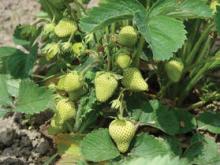Kojic acid has many uses in dermatologic products, primarily as a skin lightener, but concerns about its irritant properties have limited its role in cosmetics. Research on kojic acid shows both its promise and some evidence to support restrictions on its widespread use.
Kojic acid (5-hydroxy-2[hydroxymethyl]-gamma-pyrone, or C6H6O4), a hydrophilic fungal metabolite derived from various species of Aspergillus, Acetobacter, and Penicillium, is commonly used as a treatment for hyperpigmentation disorders (Biochem. Mol. Biol. Int. 1994;32:731-5; Contact Dermatitis 1998;39:86-7), as a food additive for preventing enzymatic browning, and as an agent to promote the reddening of unripe strawberries (J. Sci. Food. Agr. 1977;28:243). It was discovered as a fungal natural product in 1907 (Nat. Prod. Rep. 2006;23:1046-62). Kojic acid exerts a slow-binding inhibition of tyrosinase activity, mainly by chelating copper (Dermatol. Clin. 2007;25:337-42; J. Pharm. Pharmacol. 1994;46:982-5; Phytother. Res. 2006;20:921-34), and the result is a cutaneous whitening effect.
The efficacy of kojic acid in achieving such an effect is similar to that of hydroquinone, the standard and yet still controversial depigmenting agent (Dermatol. Ther. 2004;17:151-7; Skin Therapy Lett. 2004;9:1-3). Used mainly as a skin-lightening agent, kojic acid also exhibits antibiotic, anti-inflammatory, and anodyne properties (Dermatol. Clin. 2007;25:337-42). In addition, it is used in Asia as a dietary antioxidant (Phytother. Res. 2006;20:921-34; Dermatol. Surg. 1999;25:282-4).
Treatment of Hyperpigmentation
Manufacturers, especially in Japan, have used kojic acid since 1988 in cosmetic agents for its capacity to decrease pigmentation (Semin. Cutan. Med. Surg. 2009;28:77-85; J. Pharm. Pharmacol. 1994;46:982-5). In cosmetic formulations, kojic acid enhances the shelf life of products by dint of its preservative and antibiotic activity (Cent. Eur. J. Public Health. 2004;12 [Suppl]:S16-8). Its stability is one of the advantages of kojic acid over hydroquinone and other skin-lightening ingredients (Regul. Toxicol. Pharmacol. 2001;33:80-101).
In two studies, kojic acid combined with glycolic acid was demonstrated to be more effective than 10% glycolic acid combined with 4% hydroquinone for the treatment of hyperpigmentation (Facial Plast. Surg. 1995;11:15-21; Dermatol. Surg. 1996;22:443-7). In one case, Garcia and Fulton set out to assess and compare the effects on melasma and other pigmentary conditions of a glycolic acid/hydroquinone formulation and a glycolic acid/kojic acid formulation. Wood’s light and UV light photography were used to evaluate the effects of the different compounds, one on each side of the face, in 39 patients. The investigators found no statistically significant differences between the reactions; in all, 28% of the patients experienced marked improvements on the kojic acid side, 21% on the hydroquinone side. The responses to each formulation were equal in 51% of the participants. Although the kojic acid formulation was considered more irritating, the investigators found both formulations effective in treating melasma (Dermatol. Surg. 1996;22:443-7).
Treatment for Melasma
Lim studied the effects on melasma of 2% kojic acid in a gel containing 10% glycolic acid and 2% hydroquinone in 40 Chinese women with epidermal melasma. In this 12-week study, subjects were treated with the test formulation, in randomized fashion, on one side of the face and the same formulation minus kojic acid on the other side. Self-assessment questionnaires every 4 weeks, photographs, and clinical evaluations were used to rate the efficacy of the treatment. Lim found that the addition of kojic acid to the glycolic acid/hydroquinone gel improved melasma. Specifically, more than half of the melasma cleared in 24 of 40 patients who received the kojic acid formulation, compared with 19 of 40 who received the kojic acid–free gel. Two patients experienced complete clearance, in both cases on the side of the face on which the kojic acid gel was used (Dermatol. Surg. 1999;25:282-4). Two years later, Ferioli and colleagues found that combining hydroquinone and kojic acid exerted a synergistic effect, with an equimolecular distribution achieving the optimal result (Int. J. Cosmet. Sci. 2001;23:333-40).
As a lone therapy for the treatment of melasma, however, kojic acid is a member of the arsenal but is one of the last options typically selected (Dermatol. Clin. 2007;25:337-42), because it may be irritating to the skin (Skin Therapy Lett. 2006;11:1-6; Dermatol. Nurs. 2004;16:401-6, 413-6). It can be effective, though, in patients who do not tolerate the first-line products, particularly hydroquinone (Dermatol. Nurs. 2004;16:401-6, 413-6). Furthermore, combining a topical corticosteroid with kojic acid can reduce the irritant qualities of the fungal derivative (Int. J. Dermatol. 1998;37:897-903; Phytother. Res. 2006;20:921-34). In the experimental setting, kojic acid is regularly used as a reference or positive control to test the skin-whitening potential of new agents.


